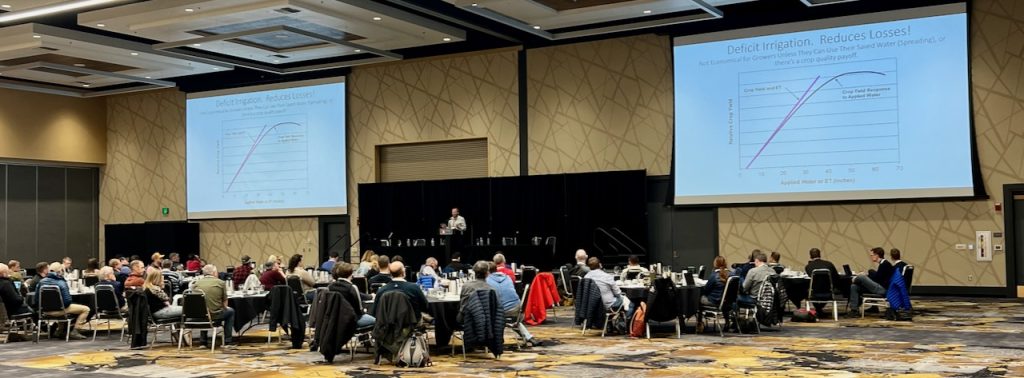LAURA HILLMANN AND TODD EINHORN, Michigan State University einhornt@msu.edu
Fruit set prediction models aim to produce timely estimates of fruitlet abscission after thinner applications to guide precision crop load management. The time to generate a prediction after an application is important to facilitate grower decisions to re-apply thinners while they are still efficacious, avoiding expensive hand thinning operations. The fruitlet growth rate (FGR) model, developed by Dr. Duane Greene, is a powerful tool that can accurately predict the percentage of fruitlets that will set in an orchard. Although a Excel data template and App are available to run the FGR model via computer and smartphone, respectively, adoption has been limited by the measurement-intensive procedure. A new approach, termed the ‘Fruitlet Size Distribution (FSD) Model’, described herein, was developed to produce predictions of apple fruit set comparable to the FGR model but achievable with less time investment. The principle underlying both models is the same: the relative growth rate or size of a fruitlet is compared to the most rapidly growing or largest fruitlet within the sample date to determine if it will abscise. Most predictions can be made within 8 days from thinner applications, though the duration of time depends on climatic, biological and horticultural factors. To optimize the FSD model we suggest beginning the model three days after the average fruitlet diameter of the orchard is 6 mm. Thus, the model partners well with thinning applications between bloom and 6 mm. For example, if, a prediction can be achieved by 8 days, assuming an average growth of ~0.8 mm per day, then fruitlets will be ~ 12 mm if another application is needed; 12 mm fruitlets are very sensitive to many thinning chemistries.
HOW-TO-GUIDE (2024 update includes new procedure to flag 120 flower cluster between pink and full bloom)
XLSM file for FSD Predict here. Please read HOW-TO-GUIDE above first. Note the XLSM file will need to be downloaded and run locally on your computer. (Click the Download icon in upper right after viewing FS Predict in Dropbox link above.) Macros have to be enabled.




